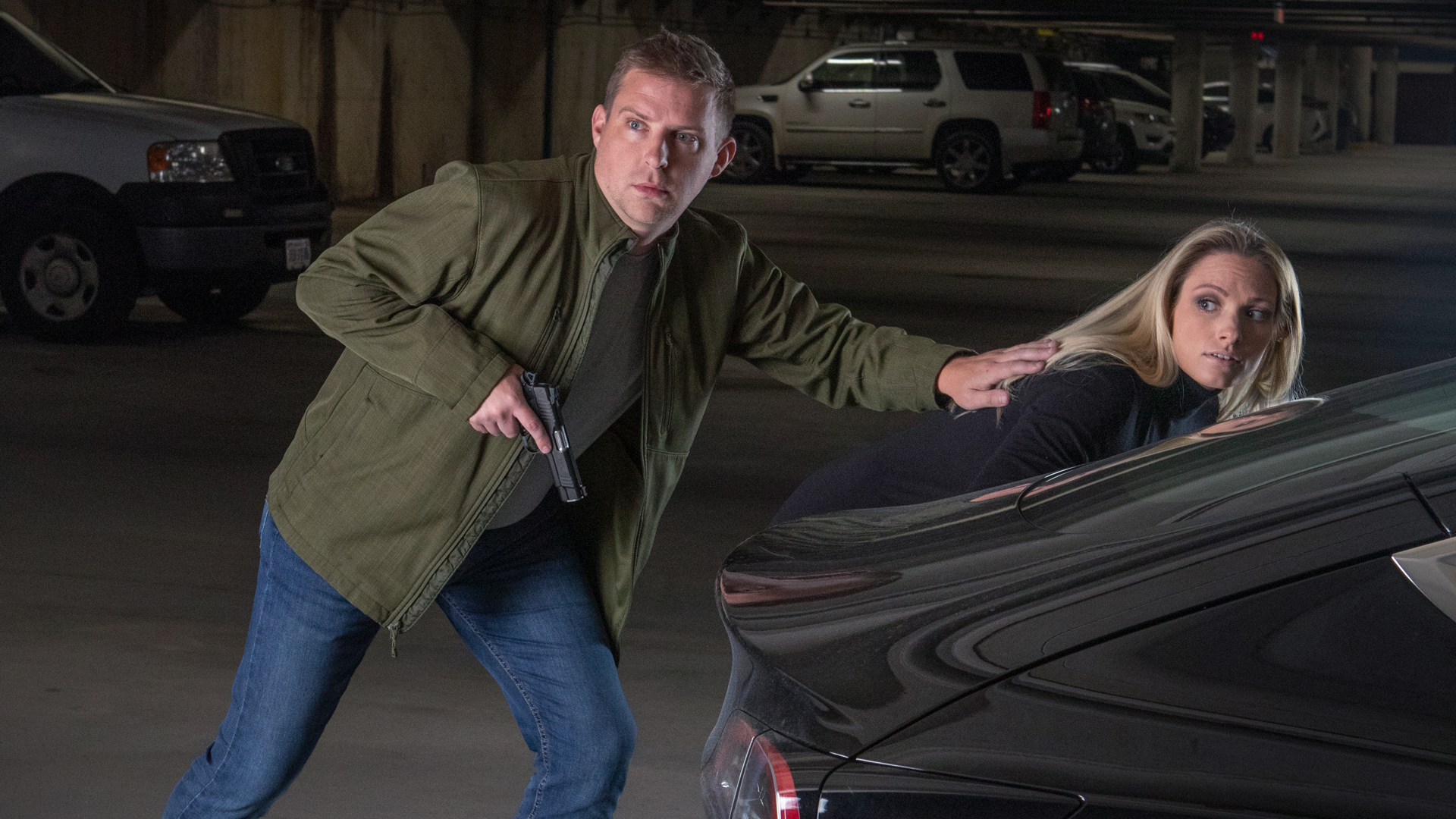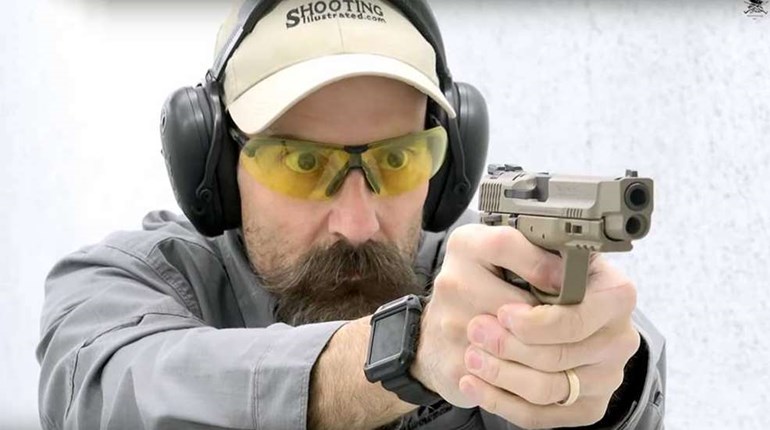
In the world of executive protection, professional agents are trained to move and shoot while simultaneously protecting one or more human lives from an active threat. What are the essential elements of a live-fire, protective-movement engagement you should know if you find yourself in a similar situation while protecting others?
The armed, professional protective agent usually starts with some prior military and/or law enforcement background and is required to attend a lengthy protective-program training academy for their respective agency.
In addition to hard-skills training, such as defensive driving, emergency medical, firearm and defensive tactics, they must also be well-versed in essential mission-required soft skills, like situational awareness, surveillance, counter-surveillance, attack recognition, surveillance-detection routes and other related actionable-item-recognition.
As with any complex job responsibilities, appropriate academic and on-the-job training (OJT) produces a skilled and competent agent capable of working alone, with a small unit or as part of a full-contingent protective detail (a team of specially trained agents). All of which is great for professional-protection personnel, but what about those of us who are the de facto protective agent of our loved ones, and are almost always working alone?
It is not feasible, nor cost effective, for us normal earth-walkers to spend six months in a protection-training academy, plus another six months of OJT working for a public or private agency. Nonetheless, there are essentials of armed professional protection that can be gleaned from the pros and used to secure the protection of our families in these challenging times.
You don’t need to be a doctor to apply first aid, and you don’t need to be a trained firefighter to extinguish your backyard barbecue. Similarly, you don’t need to be a professional protective agent to apply many protection techniques in both rural and urban operational environments.
The totality of protection training can be partitioned into soft skills and hard skills. Essential protective soft skills include situational awareness utilized to produce protective and preventive intelligence by way of potential, emerging and active-threat recognition, planning and movement. The most important of these are planning and recognition. The next step is to become familiar with the most commonly used protection terminology.
A “secured area” is considered anywhere that may have armed/unarmed security personnel to include law enforcement officers, cameras and other integrated, physical-security resources. A typical secured area may be a government building, airport, hospital and the like.

The term “movement” refers to any positional transition, whether on foot, ground transportation, boat or aircraft transport from one physical location to another. Typical protective movements are from one secured area to another. However, more challenging for any protective detail are those movements to and from unsecured areas.
“Protectee” is a term applied to those who are being protected such as your kid(s), spouse, family member, co-worker, best friend, etc. Moving your protectee(s) from home (secured area) to school (secured area) means that, utilizing ground transportation, you will be traveling through predominantly unsecured areas. Whether in a vehicle or on foot, protectees are the most vulnerable during movements through unsecured areas.
A critical component of any protective movement is to avoid going to guns at all costs. Years ago, as part of a pre-deployment train-up in preparation for an overseas assignment, a seasoned team leader (TL) shared his experience with our team.
“If you boys go to guns, you failed,” he said. The salty old TL had more than 30 years of experience, and he considered firearms akin to the lifeboats on the Titanic. “If your first response is to go to guns, then you have escalated the scenario to immediate application of lethal force, relegating your protectee(s) to greater personal risk.”
He asked us if we thought it might be a good idea to first and foremost use our soft skills to look for an iceberg (identify a potential or emerging threat). We agreed, of course. The gist of his dissertation was that if you fail to look for an iceberg, fail to see an iceberg, smash into an iceberg and the ship starts sinking, then do you need to know how to use the lifeboats? The answer is an obviously yes, but the greater emphasis was upon those proactive measures (soft skills) that would avoid placing the team and your protectee(s) in harm’s way in the first place.
As a protective agent, failure to apply such proactive measures places you behind the action/reaction power curve. Conversely, forewarned is forearmed. Applied awareness is the currency that buys you both time and opportunity to solve the tactical problem. Good situational awareness keeps you and your protectee(s) at the front end of the action/reaction power curve and keeps you from needing to reach for the lifeboats.
In terms of practical application, imagine a protection scenario where you were involved in an active shooting. Utilizing your firearm in self-defense, you did everything right tactically and legally in saving the life of your protectee(s). It was further determined by the legal system to be a justified shooting.
But, in some jurisdictions, you might still be dragged into civil court for any number of reasons. That would cost a tremendous amount of time and potentially a crippling sum of money. The best answer is to find any other way out of the situation other than going to guns. Using situational awareness to avoid increasing protectee risk is paramount to any armed protective movement.
The next essential element of a protective movement, second only to maintaining good situational awareness, is your emergency action plan (EAP).
When undertaking movement in a vehicle, it’s a mission essential to know exactly where you’re going and allow yourself sufficient time to get there, especially if you’ve never been there before. If you are late for an appointment, you are splitting your mental focus between making up for time lost and applying good situational awareness, therefore attenuating both efforts.

In the professional-protection world, agents run what’s called an “advance,” where they run the ground-transportation routes and familiarize themselves with the arrival location and its surrounding area days in advance. Since you most likely don’t have that kind of time, you can at least drive around the front of your arrival location and, if possible, the back of the building. You may observe an undesired incident, such as a firefight, structural fire or more likely an accident, protest or other civil disturbance. The best proactive measure is to avoid an incident by not driving or walking into it blindly.
If on foot, the consummate protective professional continually scans their environment for the next move on the chessboard. When exiting the car, for example, and arriving at a secured area, the agent sets a predetermined line of demarcation in between the vehicle and the building.
When exiting the car, the agent looks at the arrival location, identifies the space between the car and the building (both safe zones are considered secured areas) and, realizing that their protectee(s) are most vulnerable in that unsecured space, sets the aforementioned line of demarcation about 10 yards ahead their current physical location. If that line is closer to the building, should it hit the fan, then the shortest distance to a secured area is the building. If that line is closer to the car, should it hit the fan, then the shortest distance to a secured area is the car. The plan is to move to the nearest secured area based on your set lines of demarcation.
Should you need to move through a building, for example, mental planning in anticipation of a criminal attack at a restaurant, it is recommended to mentally map out your environment. Where are you and your protectee(s) located? Are you closer to the front door, back door, kitchen door? Another exit? If not, how can you move to pieces of cover and/or concealment during egress?
Part of your EAP should include the lethal use-of-force option of reaching for the lifeboats. If you needed to take the shot, where is the best position of dominance? What are your available backstops? Does that movement put you on the right side or left side of cover? What is the next move needed from there to exit the threat area?
The body cannot go where the mind has not first been. Using emergency-action planning to avoid increasing protectee risk is essential to any armed protective movement.
Managing another human (or more than one other human) with your gun out is an additional layer of complexity placed upon the previous two essential elements of armed protective movement.
You may need to place your firearm in one hand and use the other to help mobilize your protectee(s) who may be elderly, young, disabled, wearing restrictive clothing or otherwise unaware of the need for expedited movement. In such a situation, strong-hand-only and support-hand-only shooting now become critical skills. Single-hand, unsupported shooting is an integral part of a protective agent’s firearm-training regimen and is strongly recommended for those who anticipate a protective movement with one or more protectees.
Should you need to deploy your firearm in defense of your protectee(s) as a life-saving tool, then first and foremost is for you, and those with you, to stay mobile. As a shooter you know that stationary targets are far more susceptible to being hit than moving targets. Rule one when moving with another human and your gun out is to stay mobile while employing good muzzle discipline.
Utilization of predetermined cover and concealment is part of your plan, but you cannot stay and play for too long in any one physical location. The longer you sit on that proverbial “X” the greater your potential for incurring injury, as this provides the time for your opponent(s) to advance their attack on your protectee(s).
When moving, continually monitor your environment. Is the door you’re moving toward a pull or a push to open? Are the hinges on the left side or the right side? Does the next room you’re running into have a right corner-fed, left corner-fed or center-fed entrance, and to which direction will you move once you’re inside? What is your terminal objective when moving? Is it to exit the building? Get to a hard room and wait for the cavalry? Get to back the vehicle? Get to the chopper?
There’s a lot going on in a protective movement, with your gun out, in a high-threat volatile environment with people trying to harm your protectee(s) and yourself. If it’s all new, unfamiliar and threatening, then it could become mentally overwhelming and cause “freezing.”
Nothing can be done about the “threatening” part because it is a life-threatening situation, but if you physically train and mentally process such scenarios ahead of time, then you effectively eliminate the newness and any unfamiliarity from the equation and thus two-thirds of the mental impact, which, in turn, frees your mind to input relevant information from which to base your next tactical decision.
Last, but certainly not least, as with any physical altercation, the firearm may not be the best tool for the job based on circumstance. You may need to apply a weapon of opportunity—perhaps an improvised edged or impact weapon—to help move you and your protectee(s) to a more advantageous physical position where you can ultimately move to safety.
Essential elements of a live-fire protective movement include your ability to apply your defensive tactics or soft skills to control your environment and avoid a threat altogether, form an emergency-action plan and physically move your protectee(s) out of harm’s way and toward safety with your gun out.



































